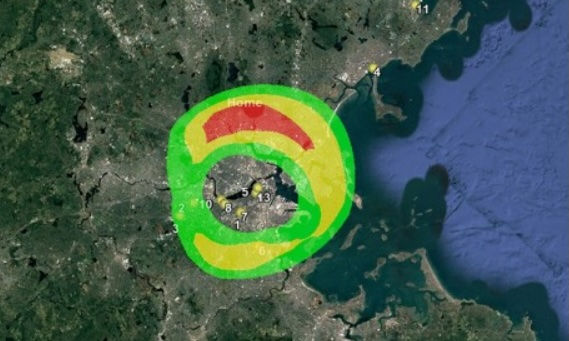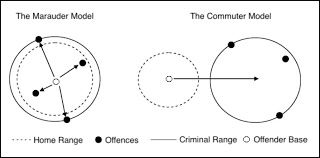Geographical profiling
- Lavinia Ion

- Aug 7
- 2 min read

Criminal profiling, which is another name for offender profiling, is a way for police to find likely suspects. It has also been used to connect cases that may have been committed by the same person. One definition states it as "the process of identifying all psychological characteristics of an individual and forming a general description of their personality based on an analysis of crimes they have committed".
Geographical profiling is a subset of offender profiling that can be used to help predict the area within which the home or base of a serial offender resides. Police services globally have incorporated it into their crime analysis capabilities but there remains limited research on how this has been achieved.
How did this method of criminalistic analysis come to be? To understand how location profiling works, we need to look at how criminals use their surroundings to make choices. The study of environmental psychology states that the environment is not random, but it has structure. And since all human interactions depend also on the environment, then the location and time of offenses must also be the result of a thoughtful decision.

There are 2 types of serial offenders: the marauders and the commuters. These categories focus on the spatial range of the crimes committed. The term marauders refers to criminals that commit offences close to their home, while the commuters travel farther distances, outside their living area. Most criminals tend to be marauders, since the benefit of knowing an area outweighs the risk of being identified.
Offenders travel relatively short distances, between 0.32 km and 0.8 km, to abduct their victims and up to 39 km to dump their remains. Serial criminals can travel up to 8 km. From the 6th murder, the body disposal sites are further from home, but from the 8th, the distance traveled decreases. The proportion of commuters/marauders tends to differ when looking at specific crimes: serial rapists & arsonists, novice offenders are usually marauders, serial burglary has a mixed proportion and instrumental/financial motivation of an offender is often that of a commuter.
However, there are some obvious limitations to this offender profiling method. Firstly, it assumes that criminals act rationally. In the case of an impulsive offender, this does not hold. Moreover, if the offender committed only one crime, then there isn’t a well defined spatial pattern to look out for, or rather a much more limited one.
In the end, geographical profiling is a powerful tool in criminology that aids to this day narrowing down suspects and connecting related cases.
References:
Research report. Spatial patterns of serial murder: An analysis of disposal site location choice, Ludrigen & Canter 2001
Commuters and Marauders: An Examination of the Spatial Behaviour of Serial Criminals, Meaney 2004
https://www.researchgate.net/publication/225027938_Commuters_and_Marauders_An_Examination_of_the_Spatial_Behaviour_of_Serial_Criminals
Canter, D. (2003). Mapping Murder:The Secrets of Geographical Profling.Donald, I. (2022). Environmental and Architectural Psychology: The Basics
“Offender Profiling.” Wikipedia
Pictures:






Comments